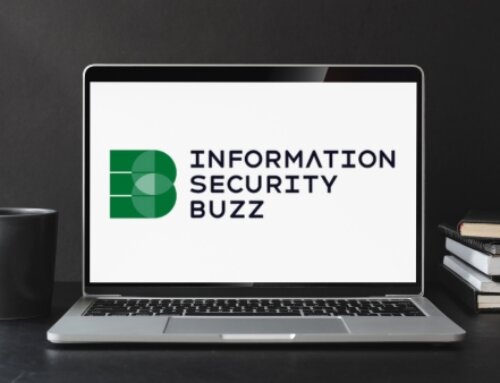How Food and Beverage Companies Can Enhance Product Analysis with Social Listening
Years ago, for consumers to interact directly with the brands and products upon which they rely, one would have to find the 1-800 toll-free phone number on the bottom of a cereal box or soda can, dial-in (during normal business hours no less) and stay on hold until a human was available to answer any questions. Fortunately, those days are long behind us, and thanks to the wonderful world of social media our dearest brands are also now our nearest brands with social listening. These days consumers enjoy unprecedented access to whichever companies, brands, products, utilities, and services they choose, using any channel they choose, in whatever language they choose, 24 hours a day, 7 days a week. This is great for consumers, but it can be highly challenging for food and beverage companies to manage.
Social media channels have almost overtaken 1-800 numbers as the most popular way for consumers to interact with companies. To address this increase, most companies have in place some sort of consumer response social monitoring; they keep tabs on users who share feedback or post questions on their Twitter profile and Facebook pages, answering direct questions about distribution and ingredients while diverting more complex inquiries (contaminants, recalls, etc.) to private channels. However, by focusing only on activity occurring on company-owned channels companies aren’t reaping the benefits of a comprehensive Social Listening solution.
Social Listening goes beyond monitoring content that interacts with company-owned channels by holistically listening to consumer conversations occurring across all social media platforms. Even if social media is incorporated into other research questions, without partnering with Social Listening experts the results are not going to be nearly as meaningful or actionable. Food and Beverage companies have special concerns when it comes to interfacing with their consumers, from complaints about contaminants to concerns over ingredients derived in areas of conflict, the landscape has changed drastically, and largely due to the prevalence of social media. Below are some use cases which exemplify the need for Social Listening in the Food and Beverage industry:
Trend Analysis
A standard element of our Social Listening analysis for Food and Beverage clients includes trend analysis: benchmarking the flow of social activity week to week, month to month, or year over year. Mentions are often broken out into categories to further contextualize the patterns of social activity. Categorizations can include platform, topic, user type, region, and product/brand breakdown, just to name a few. Understanding these patterns, and the deviations thereof can help attuned analysts identify noteworthy activity, such as activist campaigns, packaging or product complaints, and concerns from or about employees.
Case Study: Are your campaign partnerships effective? Could they be improved?
A CPG client partnered with an influential athletic entertainment group expecting that the partnership would increase reach and engagement across multiple social platforms. After evaluating campaign activity for several weeks, we found that there was no discussion of the campaign outside of the posts published by the partner themselves. Trending charts and graphs allowed our client to adjust their strategy for partnerships going forward, including instituting weekly and monthly KPI goals for reach and engagement.
Case Study: How do you stay informed during ongoing crisis events?
A snack food client was undergoing a recall and required frequent alerts regarding sources covering the recall, trending social volume around those sources, potentially problematic posts from individuals and influencers, as well as analysis of the overall tone of the media coverage and social posts. After a period of several weeks, recall volume decreased below an established average daily threshold based on historical analysis of previous recall activity and we were able to advise our client to resume outgoing marketing messaging as normal.
Comparative Analysis
Competitive analyses are not only critical for brand teams to understand and contextualize their own social presence, but it also allows them to remain abreast of consumer attitudes and perceptions regarding competitor brands compared to their own. Social Listening helps brand teams understand how consumers interact with and discuss competitor brands. These analyses can be overlayed with multiple different categories, such as consumer personas, regionality, discussion topics, overall sentiment, and content tone efficacy. Brand loyalty drivers can be examined across a range of competitors, analyzing what causes consumers to buy your product over a competitor’s product, or vice versa.
Case Study: Are my competitors who I think they are?
A bakery client had included a small cohort of competitors with their Social Listening reports for several years, however, we began to see co-mentions of a new competitor arising through regular reporting. After a deep dive into our client’s consumer discussions, we identified a previously unconsidered competitor which consumers equated with our client’s brand. This new competitor manufactured snacks from an industry that the bakery brand teams weren’t currently considering. This insight changed their understanding of how their consumers use their products and future competitive analyses featured a range of snack foods from non-bakery brands.
Consumer Attitudes Analysis
Consumer Attitude Analyses are a hallmark of our Social Listening approach and they’re also one of our most customizable elements. These analyses can work in place of, or in concert with, traditional market research tactics, and they often either confirm or confound assumptions brought by other teams within your organization. Brand teams will often pose questions that our analysts will craft a custom research study to answer. These questions include, but are not limited to, the below:
- “What is the brand experience of our consumers in the mid-Atlantic? Does this experience differ from our consumers on the West Coast?”
- “Are our consumers finding our products in the outlets where they prefer to shop? Are there retail spaces that would better serve our consumers?”
- “What are the most-desired seasonal flavors across my industry? How early are consumers looking to find these flavors in market?”
- “How is my brand performing with users who care about ‘clean label’, or ‘green energy’ concerns? How do my competitors perform with these same users?”
- “What are my consumers’ other interests? How can I leverage these to maximize marketing efforts?”
Case Study: Do my consumers go out of their way to find my products? Or are there spaces where consumers are looking for them and can’t find them?
We were able to let a brand team know that a greater share of their consumers was looking for products in convenience stores, gas stations, and bodegas than they had previously assumed. As a result of our analysis, they were able to adapt their distribution model to include more C-Store penetration and more individually wrapped products.
Case Study: What are the motivating factors for brand loyalty?
Analysts crafted a study to look at various drivers for brand loyalty for a sweet baked goods brand and their competitors. We found that loyalty was primarily driven by the quality of their products, opportunities to share them with family and friends, and the special occasions which were made more special by having these products. The only negative driver among loyal consumers was availability, indicating issues with distribution and consumers’ ability to access their favorite products. Competitor brands were found to have similar driving factors, however, negative mentions around all loyalty categories for competitors increased exponentially year over year for the previous three years running while positive mentions of our client’s loyalty categories increased during the same period. Our client was able to bring these categories to their marketing agencies and use them to guide messaging and content strategy going forward.
Data derived from Social Listening is a deep and rich source of information and insights which can be tapped by skilled analysts, who are experts in social media, linguistics, and research methodologies. Verinext Social Listening analysts have over three decades of experience in collecting, categorizing, analyzing, and extracting insights from this well of raw consumer mentions. Food and Beverage brands are some of the most visible brands online, and they can be at the mercy of fickle consumers who have the world at their fingertips. Verinext analysts can ensure that your company and your brands reap the greatest benefit of this massive resource by bringing data-driven guidance to your marketing strategy and business objectives. Contact us today for more information.






